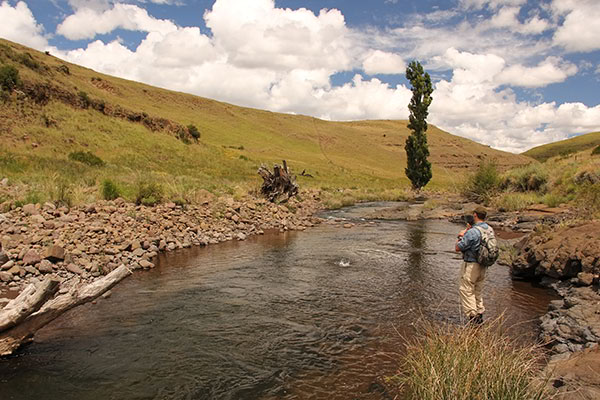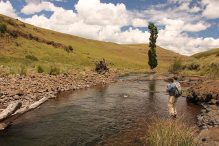Fly fishing is typically fishing but is considered a sport in many countries like New Zealand and Scotland where trout and salmon fishing in rivers or fresh waters are rampant. It uses a rod and an artificial “fly“ as bait. Fly is a hand-tied artificial lure that imitates natural insects or small baitfish to attract the big fishes. Flies incorporate a variety of natural and synthetic materials wound onto secured hooks. Fly fishing needs a lot of skill and a lot of patience. But this wonderful activity can also be relaxing and a stress reliever. You will be away from the busy buzz of the city and be able to concentrate on learning something new. You will be in one with nature discovering its beauty through this sport. Like any sport, you need the right gear and technique to get things going.

Fly Fishing Gear and Equipment:
- Clippers/nippers are essential for cutting tippet and the tail ends of knots
- Zingers are for holding your nippers or hemostat
- The hemostat is a clamp used by angler essentially for removing flies from the mouths of the trout or salmon and for pinching down the barb on the hook.
- Nail knot is another essential accessory for helping you quickly tie leader
- Fly floatant is a powder or liquid form that you apply to your fly to keep it from being saturated in water. It also helps the fly to stay afloat.
- Waterproof Waders that keeps you comfortable and dry
- Fishing rod
- Fishing line that matches your fishing environment
- Fly
- Hat to protect you from the heat of the sun.
- Sunglasses
These are just some of the basic gears and equipment of fly fishing. These things are important to have the fullest experience. Make sure you talk to an expert so that you can grasp even more what to do and what to bring.
What are the rod actions that you can do?
It is basically fishing but there are certain actions that are different such as the rod actions. First, the fast action. This requires you to have good timing and technique. This action is helpful in windy conditions and ideal when catching large freshwater fish. Second is the moderate-fast action a mix of versatility and performance. These rods will still punch tight loops in the wind while offering a level of flex to protect you from breaking off that fish. Next is the moderate action which improved line control and accuracy over fast action. Finally, the slow action which is a traditional action designed for anglers who need to make a short and accurate cast preferably on small rivers and streams.
All these tips are just the basic tips. As mentioned before, always consult an expert on this. They will give you more insight like how to spot a fish in rivers or learn how to read a stream. They will also recommend the best gear for you and teach you how to choose the best fly or the best knot tying technique. Furthermore, they can teach you the best rod action technique for different occasions for you to be more ready once you get to do this.

Where is the best place to go fly fishing in South Africa?
There are many places that you can go fishing in South Africa. Its rich environment does give the perfect conditions for freshwater fish to thrive. But that really stands out is the Rhodes, Eastern Cape. This gorgeous place is set in the southern part of Drakensberg mountains and close to the highest peak in the eastern cape and the highest mountain pass. The wild trout and yellow fish-rich rivers are the ideal places for fly fishing. Fly fishers will surely enjoy the scenery and the abundant catch.
Fly fishing is not only a sport but also an activity that is surely enjoyed by anyone who wants to move away from the stress of the noisy city. It can reset your mind and can give you the well needed recharged state to start another day.
